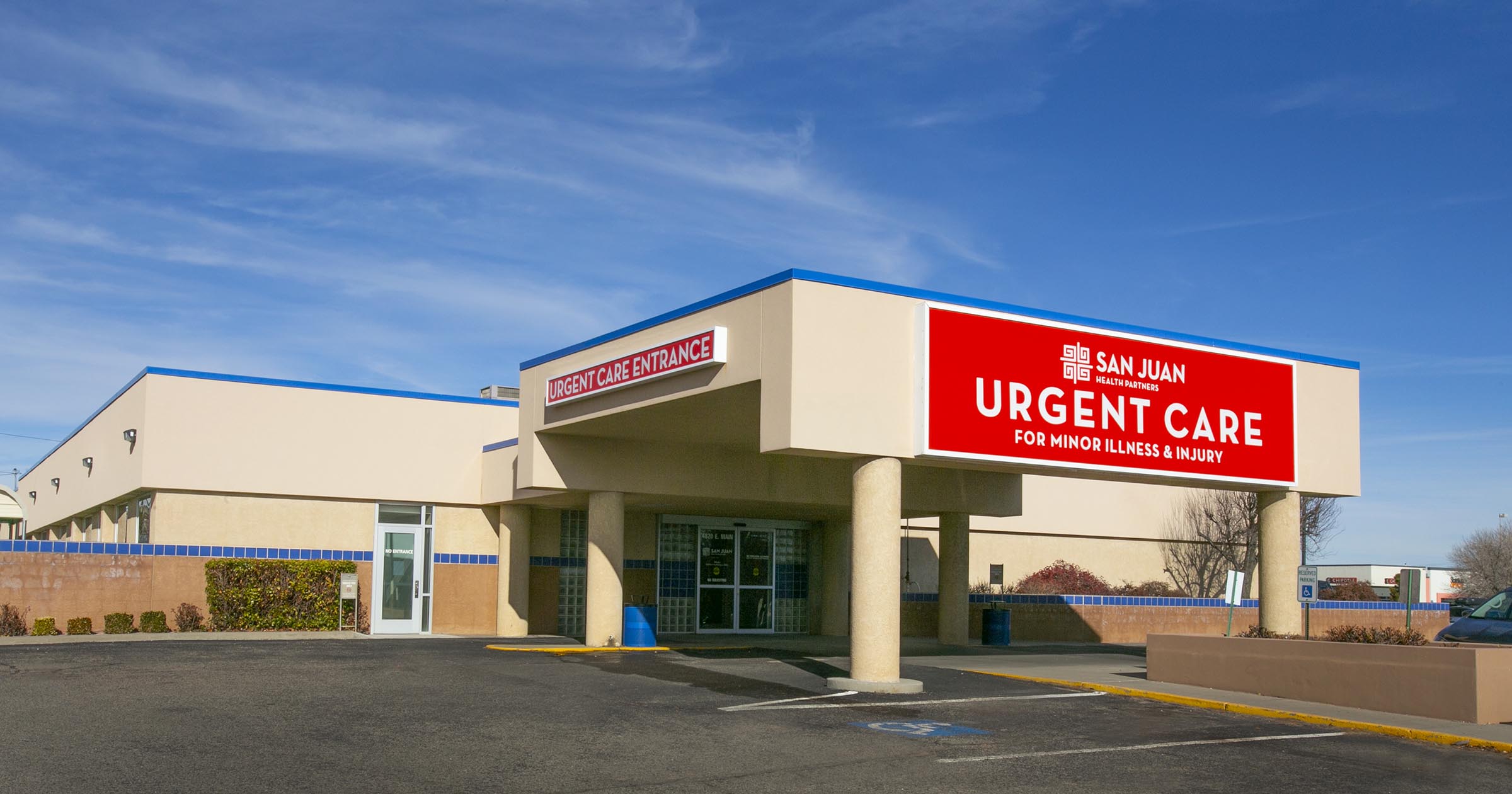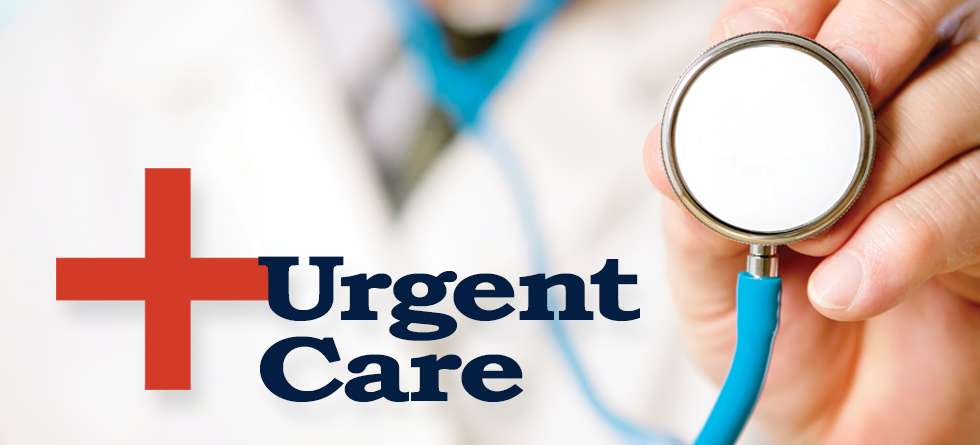Vital Services Offered by Clinics Focusing On Urgent Care
Vital Services Offered by Clinics Focusing On Urgent Care
Blog Article
The Significance of Urgent Care Centers in Bridging the Space Between Key Care and Emergency Situation Services
Immediate treatment centers have actually arised as a vital component of the health care landscape, successfully dealing with the critical requirement for prompt medical attention without turning to emergency situation services. By providing look after non-life-threatening problems, these centers help to relieve the concern on emergency situation areas and boost person access to timely treatment. Their expanded hours and diverse services satisfy a growing population seeking alternatives to standard medical care. The developing role of urgent care facilities increases essential concerns regarding their integration within the broader health care system and the effects for patient outcomes and source appropriation.
Review of Urgent Treatment Centers
Urgent treatment centers have ended up being a crucial part of the health care shipment system, providing easily accessible medical services for non-life-threatening problems. These facilities usually operate outdoors basic office hours, offering clients a choice to emergency areas and medical care setups. Patients seeking immediate care usually present with issues such as small injuries, infections, or diseases that call for prompt interest but do not posture a prompt threat to life or arm or leg.
Urgent care centers are staffed by a series of medical care specialists, including physicians, registered nurse practitioners, and doctor aides, that are equipped to identify and deal with various clinical problems. They usually feature analysis devices such as X-ray equipments and lab solutions, enabling them to offer thorough care on-site.
The establishment of immediate treatment facilities has been influenced by the enhancing need for timely medical services in a fast-paced culture, where people may struggle to safeguard visits with main treatment carriers. Because of this, these centers aim to ease blockage in emergency departments, improving overall medical care performance. In addition, immediate care centers typically serve as a bridge between medical care and emergency situation solutions, making certain that patients receive appropriate care customized to their particular clinical demands.

Advantages of Urgent Care Provider
Accessing timely treatment is a considerable benefit of immediate care services. These centers give immediate interest for non-life-threatening conditions, properly decreasing wait times compared to typical emergency departments. People seeking care for minor injuries, health problems, or urgent health and wellness problems can get therapy without the lengthy delays typically connected with hospital brows through.
Another key benefit is the extensive hours of operation. Numerous urgent care facilities are open evenings and weekends, accommodating patients who may not be able to see their medical care provider throughout basic office hours. This flexibility makes immediate treatment an obtainable alternative for those with active schedules or sudden health concerns.
In addition, immediate treatment centers typically provide a vast array of solutions, including diagnostic screening, X-rays, and standard lab services. This comprehensive approach allows for fast diagnosis and treatment, boosting individual contentment.
Additionally, immediate treatment facilities are usually more cost-efficient than emergency areas, making them an appealing alternative for people without insurance coverage or those with high-deductible plans. On the whole, urgent care solutions play an important role in offering available, prompt, and affordable healthcare.
Comparison With Medical Care
Usually, clients usually weigh their choices between urgent treatment centers and medical care service providers when looking for clinical interest. Both offer vital duties in the medical care system, yet they differ dramatically in availability, range, and cost.
Medical care service providers are normally the first factor of call for people, focusing on long-term health and wellness monitoring, preventative treatment, and chronic condition management. They provide connection of treatment, cultivating a patient-provider relationship that enables thorough health assessments and customized treatment plans. Scheduling an appointment can be time-consuming, typically needing days or weeks in development. Urgent Care.
On the other hand, urgent care centers provide prompt take care of non-life-threatening problems that require punctual focus, such as small injuries or infections. These centers usually operate beyond traditional office hours, accommodating individuals that may not be able to visit their medical care carrier throughout routine business times. Furthermore, urgent care is generally extra cost-efficient than emergency situation space check outs, making it an enticing option for those with minimal health care access.
Inevitably, while urgent care facilities view it and main care providers both add to individual wellness, they provide to distinctive requirements, making it important for patients to establish which choice best straightens with their situations.
Emergency Situation Solutions Communication
The interaction in between urgent care facilities and emergency solutions is an important element of the health care landscape, particularly when people face circumstances that might escalate in severity. Urgent treatment centers offer as a bridge in between health care and emergency situation departments, addressing non-life-threatening conditions that call for immediate interest. This cooperation enhances patient end results and optimizes resource appropriation within the health care system.
When people present with not life-threatening but urgent problems, immediate care facilities can successfully handle their needs, relieving congestion in emergency clinic. When a client's problem goes beyond the extent of visit the website immediate care therapy, Facilities geared up with diagnostic capabilities can help with timely references to emergency situation solutions. This smooth communication aids make certain that people get the proper degree of treatment without unnecessary delays.
In addition, effective interaction in between immediate treatment service providers and emergency services is vital. Sharing person information and therapy histories promotes coordinated care, decreasing the threat of repetitive examinations and procedures. As healthcare remains to advance, the vibrant relationship in between immediate treatment centers and emergency situation services will certainly play a pivotal duty in enhancing client care effectiveness, fulfillment, and overall wellness results within the neighborhood.
Future of Urgent Care Facilities
As medical care demands develop, the future of urgent treatment facilities is poised to come to be significantly essential to the total medical environment (Urgent Care). These centers are most likely to expand their functions by integrating sophisticated modern technologies, such as telemedicine, expert system, and electronic health record assimilation. This will boost client accessibility and enhance care sychronisation in between urgent treatment, primary treatment, and emergency situation solutions
In addition, urgent care facilities are expected to expand their solution offerings to consist of precautionary treatment and persistent disease management. This shift will certainly place them as essential parts in managing population health, minimizing the worry on emergency situation divisions, and attending to voids in health care accessibility.
The growing pattern of value-based care will additionally speed up the makeover of immediate care facilities, motivating them to concentrate on individual end results and complete satisfaction. Facilities may also embrace collective method designs, functioning carefully with professionals and key treatment suppliers to make certain thorough person administration.
Final Thought
To conclude, immediate care facilities offer an important feature in the health care system by giving prompt access to therapy for non-life-threatening conditions, successfully Full Article relieving pressure on emergency situation services. Their expanded hours and varied variety of solutions improve person comfort and fulfillment, while also making certain suitable treatment delivery. As health care requires remain to develop, the role of immediate treatment facilities will likely come to be progressively substantial, further connecting the void between main treatment and emergency solutions.
The facility of urgent care facilities has been influenced by the increasing demand for timely clinical services in a hectic culture, where patients may have a hard time to safeguard appointments with main treatment service providers. In addition, urgent care centers typically offer as a bridge between primary care and emergency services, making certain that patients receive suitable care customized to their certain clinical demands.
Many immediate treatment facilities are open evenings and weekend breaks, suiting people that might not be able to visit their main treatment carrier throughout typical office hours (Urgent Care). As healthcare continues to develop, the dynamic connection between immediate care facilities and emergency services will play a critical function in boosting person treatment performance, complete satisfaction, and total wellness results within the neighborhood

Report this page